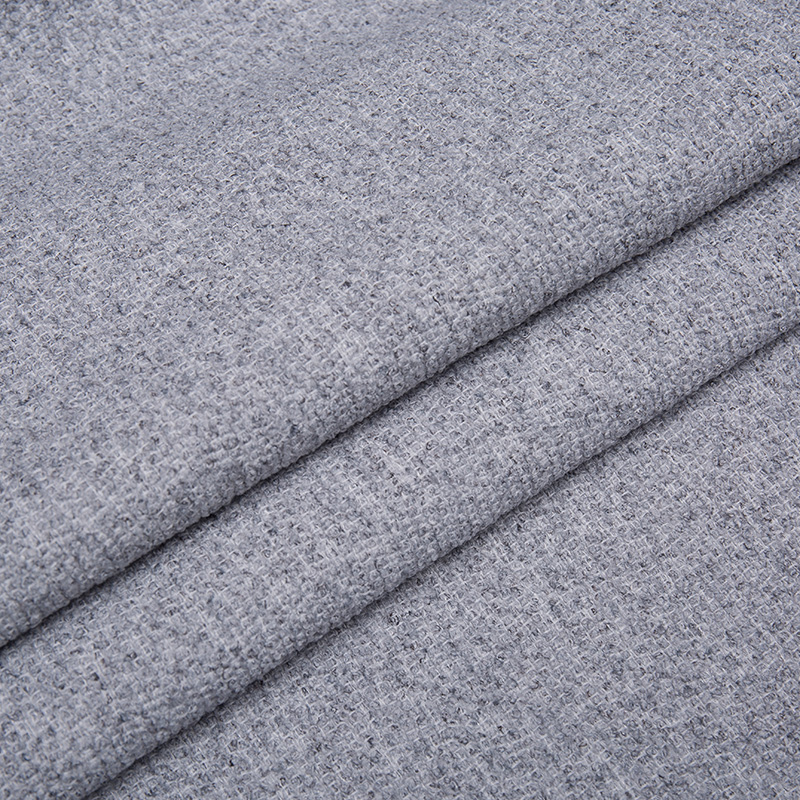 By Admin
By Admin
Natural linen has been valued for centuries for its distinctive texture, breathability, and timeless aesthetic. Its slightly rough, irregular surface and elegant drape make it a favorite for clothing, upholstery, and home décor. However, linen is also known for its high cost and maintenance demands, prompting manufacturers to create alternatives like Polyester Imitation Linen Fabric. But how closely can this synthetic fabric replicate the look and feel of natural linen?
Polyester imitation linen is a man-made fabric designed to replicate the appearance of real linen while offering the benefits of synthetic fibers. It is typically composed of 100% polyester or a polyester blend, woven in a way that mimics linen’s natural slubbed texture. The weaving pattern, combined with finishing techniques, gives the fabric a similar visual depth and surface irregularity that is characteristic of linen.
Unlike natural linen, which is made from flax fibers, polyester imitation linen does not have the natural absorbency or breathability of linen. However, it compensates with durability, affordability, and ease of care. Understanding these differences is essential to assessing whether the fabric is a suitable substitute for linen in various applications.
Texture and Weave
Polyester imitation linen is woven with a texture that closely resembles linen’s signature irregular surface. While real linen has naturally occurring slubs and subtle variations in thickness, manufacturers of imitation linen use slubbed yarns or weaving techniques to create a comparable effect. From a distance or in casual use, this visual similarity can be remarkably convincing.
Appearance
The fabric’s matte finish and slightly coarse look give it a linen-like aesthetic. Some polyester imitation linens even feature a heathered or slightly uneven color pattern to further replicate natural linen’s depth and organic appearance. For interior design purposes, it can convincingly mimic linen drapes, upholstery, or table linens.
Drape
Natural linen drapes fluidly but has some stiffness due to the flax fibers. Polyester imitation linen can be manufactured to have a similar drape, although it may feel slightly smoother or more uniform. Advances in polyester weaving allow the fabric to hang in a way that closely resembles linen, making it suitable for curtains, garments, and decorative textiles.
While polyester imitation linen can mimic the look of natural linen, there are several inherent differences:
Breathability
Natural linen is highly breathable and moisture-wicking, which makes it comfortable in hot and humid conditions. Polyester, being synthetic, is less absorbent and can retain heat, which may make imitation linen feel warmer or less comfortable in summer clothing.
Texture
Even with slubbed yarns, polyester lacks the unique tactile irregularities of flax fibers. To the touch, imitation linen feels smoother and slightly more synthetic, whereas real linen has a crisp, cool texture.
Durability
Polyester imitation linen is more resistant to wrinkles, shrinkage, and stretching than natural linen. It can withstand repeated washing and heavy use without losing its shape, making it ideal for budget-friendly home décor or easy-care garments.
Maintenance
Natural linen requires careful laundering to avoid shrinkage and preserve texture. Polyester imitation linen is machine washable, dries quickly, and rarely needs ironing, offering practical advantages for busy households.
Environmental Impact
Linen is biodegradable and sourced from a renewable plant fiber, while polyester is petroleum-based and less eco-friendly. However, advances in recycled polyester are gradually improving the sustainability of synthetic fabrics.

Polyester imitation linen is widely used where the aesthetic of natural linen is desired but practical considerations like cost, durability, or ease of maintenance are prioritized. Some popular applications include:
In each case, polyester imitation linen delivers the desired aesthetic while providing superior resilience against daily wear, spills, and frequent washing.
When deciding between natural linen and polyester imitation linen, the choice depends on priorities:
Ultimately, the decision involves balancing authenticity with practicality.
Polyester imitation linen fabric offers a compelling alternative to natural linen by closely mimicking its visual texture, drape, and overall appearance. While it cannot fully replicate linen’s breathability, cool touch, and natural feel, it excels in affordability, durability, and ease of care. For many applications, including home décor, casual clothing, and accessories, polyester imitation linen provides a practical solution that combines style with functionality. By understanding the strengths and limitations of this fabric, consumers can make informed decisions and enjoy the timeless aesthetic of linen without the challenges of high-maintenance natural fibers.
+86-18262539999(Meng Lin)